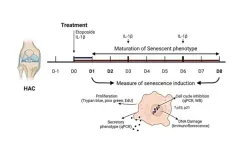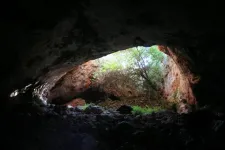It is an all-too-common fact that potential drugs can look extremely promising in preclinical laboratory testing but fail when it comes to effectively treating humans. To better translate promising lab findings into effective new treatments, a team of researchers from the Keck School of Medicine of USC, supported by the National Institutes of Health, has developed, and tested, an innovative new system for conducting preclinical research on six potential new stroke treatments, identifying the strongest candidate for further study.
“We now have a feasible preclinical research system to find promising stroke therapies with a higher chance of success in clinical trials,” said Walter J. Koroshetz, MD, director of NIH’s National Institute of Neurological Disorders and Stroke (NINDS).
Rather than relying on a single laboratory led by one investigator to test a potential new drug, Patrick D. Lyden, MD, professor of physiology and neuroscience and of neurology at the Keck School of Medicine of USC, coordinated the efforts of a network of laboratories to conduct preclinical research on potential stroke treatments combined with intravascular thrombectomy. A central coordinating body at the Keck School of Medicine developed detailed protocols for the labs to follow to ensure higher levels of scientific rigor than traditional preclinical testing models.
“For years, we have tested drugs on animals first, but we often get it wrong,” said Lyden, who is lead author of a study about this network and the research it carried out which was just published in Science Translational Medicine. “Our primary goal with this research was to show there is a better way to do preclinical testing and that this is one way to get better results that can be replicated.”
Better models, more rigor
The network, dubbed the Stroke Preclinical Assessment Network, or SPAN, consisted of six laboratories in different locations across the U.S. The team at the Keck School of Medicine was not directly involved in any of the testing. Lyden and his team developed the protocols and procedures the network had to follow; handled the preparation and distribution of the study drugs; collected and analyzed all outcome data; and created a unique system of blinding the testing to prevent bias.
One critical innovation the team instituted, in addition to increasing the number of laboratories involved, was to use animal models that resemble typical stroke patients. Instead of testing drugs mostly on young male mice and rats, as Lyden says is often the case in preclinical research, the researchers also included older mice, mice with diet-induced obesity or hyperglycemia and rats that were spontaneously hypertensive. The rodents were also evenly split between male and female.
Lyden’s team also developed new ways to build more scientific rigor into preclinical testing, standardizing the randomization and blinding practices among the different labs.
All animals in SPAN were logged at USC by the research laboratories using an on-line database. The animals were randomly assigned to treatment by the USC team and then treated at the appropriate research laboratory. When it came to blinding the study, the team at USC turned all the substances into identical looking powders, assigned them numbers as their only identification and shipped them to the various labs. One of the six treatments involved a medical device that could not be concealed.
“We showed that it is feasible to improve the scientific rigor of preclinical testing and how it can be done,” said Lyden. “If research is being done without as much rigor as possible, it is a waste of time, taxpayer money and animal lives.”
A possible candidate
The central coordinating team at the Keck School of Medicine also employed a novel statistical method to evaluate the six treatments at four points in the process. While all the substances had been selected for inclusion based on prior research showing promise as a stroke treatment, the USC team analyzed the efficacy of each of the substances at these four points by giving the animals a series of functional tests. Based on the results of those tests, substances that failed to show sufficient efficacy were dropped. Using this new statistical method, three substances were dropped after the second evaluation, and two more were dropped after the third. Only one substance, uric acid, showed efficacy through all four phases of analysis.
Although uric acid appeared promising in the SPAN trial using the primary endpoint, there were no signs of benefit using the other, secondary, endpoints. Hence, the SPAN investigators recommend additional animal studies of uric acid before recommending clinical trials in human stroke patients.
“The study acted as we intended it to by sequentially eliminating the futile drugs until we were left with one,” said Lyden. “We believe uric acid, based on this evaluation, should be studied further.”
About the study
Additional authors of the study include Ryan P. Cabeen, Jessica Lamb and Karisma A. Nagarkatti of the Keck School of Medicine of USC; Márcio A. Diniz, Sungjin Kim and André Rogatko of Cedars-Sinai Medical Center; Francesca Bosetti and James I. Koenig of the National Institutes of Health; Kazi Akhter, Brooklyn D. Avery, Adnan Bibic, Suyi Cao, Senthilkumar S. Karuppagounder, Raymond C. Koehler, and Yanrong Shi of Johns Hopkins University; Ali S.Arbab, Krishnan Dhandapani, David C. Hess, Mohammad B. Khan, Pradip Kamat, and Cameron Smith of Augusta University; Hannah E. Beatty, Ligia Simoes Braga Boisserand, Sebastian Diaz-Perez, Alison L. Herman, Fahmeed Hyder, Conor W. Johnson, Jelena M. Mihailovic, Basavaraju G. Sanganahalli, Lauren H. Sansing and Sofia E. Velazquez of Yale University; Angel Chamorro of the University of Iowa and the University of Barcelona; Anil K. Chauhan, Nirav Dhanesha, Mariia Kumskova, Enrique C. Leira, Rakesh B. Patel, Brijesh Sutariya and Daniel Thedens of the University of Iowa; Jaroslaw Aronowski, Anjali Chauhan, Andrew Goh and Louise D. McCullough of the University of Texas HSC; Cenk Ayata, Takahiko Imai, Joseph B. Mandeville, Andreia Morais, and Tao Qin of Harvard University.
The research was supported by grants from National Institutes of Health [R01 NS099455, 1UO1NS113356, R01NS112511, R01NS110378, R01NS117565, 19TPA34850076, U01NS113444, R01NS102583, R01NS105894, U01 NS113443, U01NS113445, R35HL139926, R01NS109910 U01NS113388, U01NS113388, U24NS107247, U01NS113451, U24NS113452] and a NIH National Center for Advancing Translational Science (NCATS) UCLA CTSI Grant [UL1 TR001881-01]. The Laboratory of Neuro Imaging at USC is supported in part by National Institutes of Health [P41EB015922]. Author Ryan P. Cabeen is supported in part the Chan Zuckerberg Initiative DAF [2020-225670], an advised fund of Silicon Valley Community Foundation.
END





